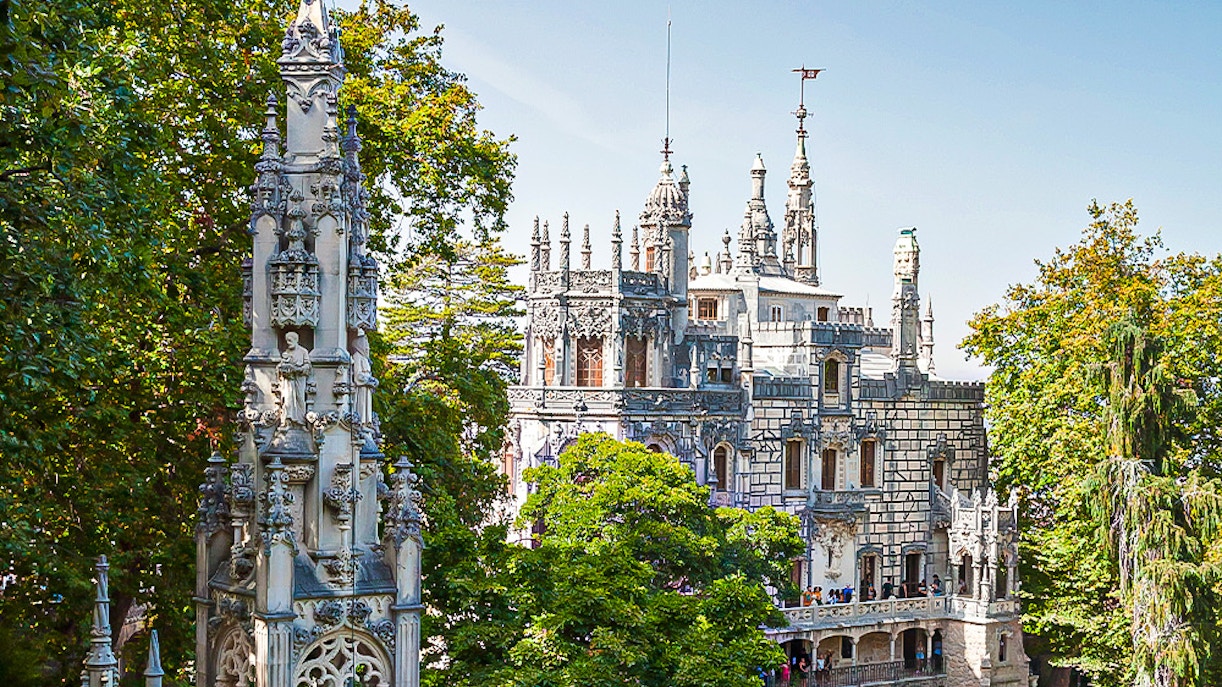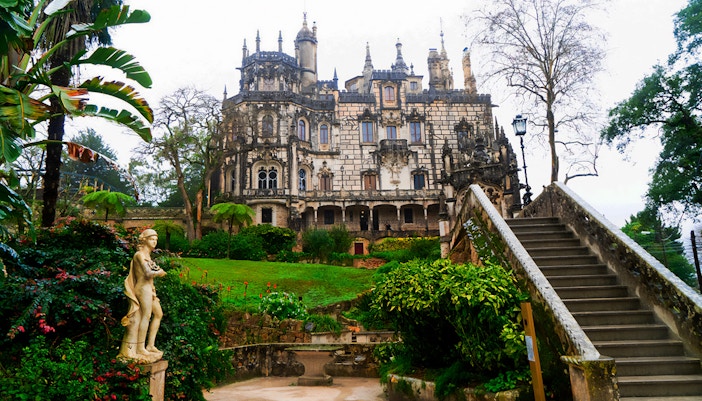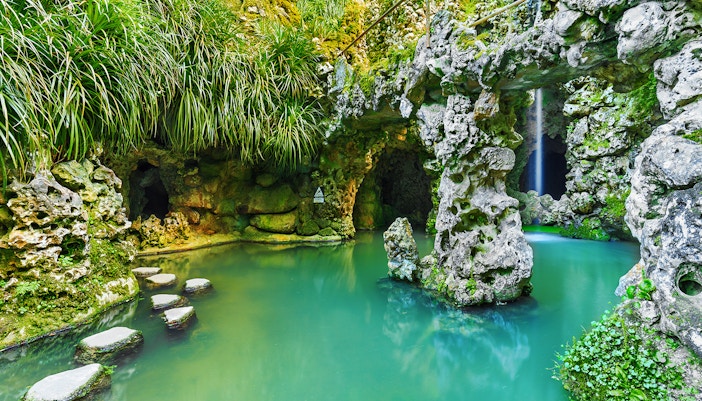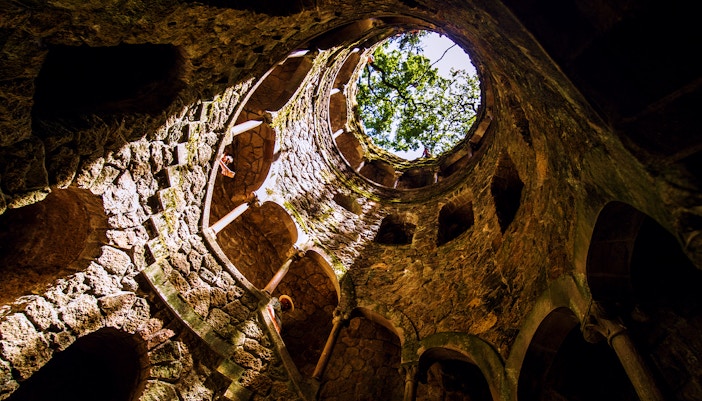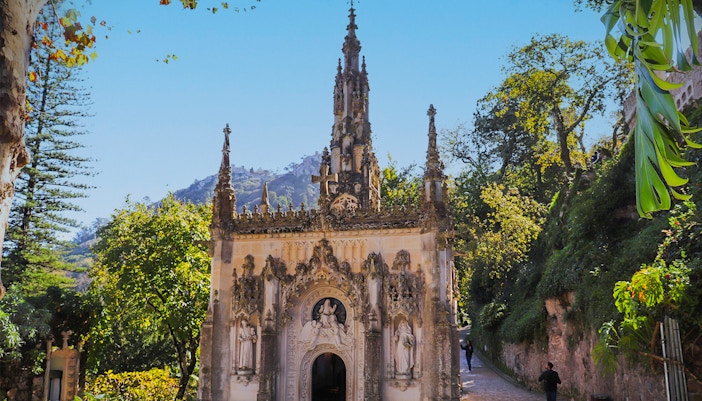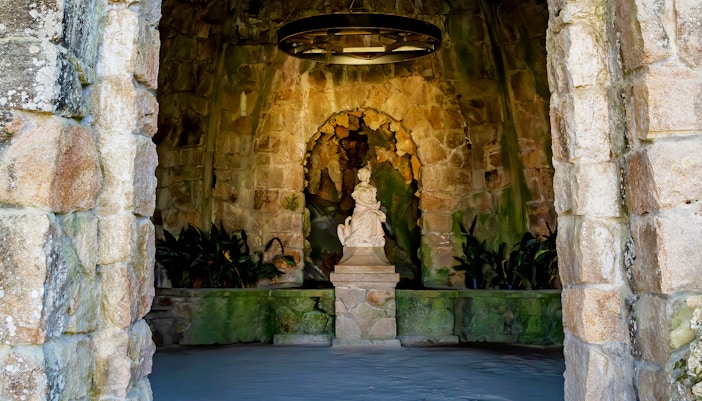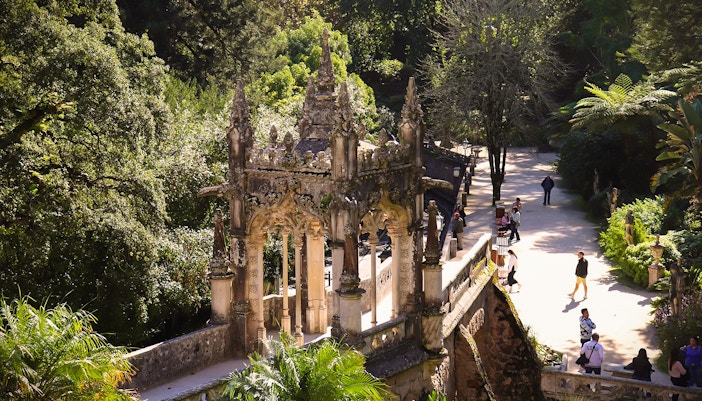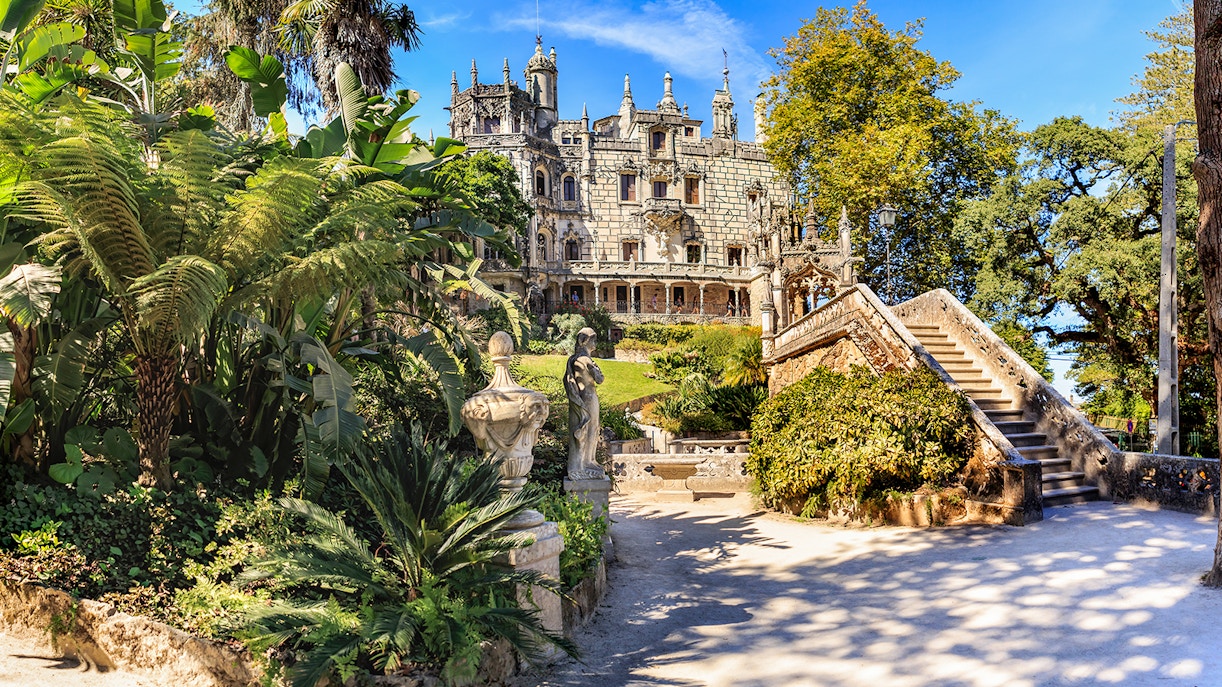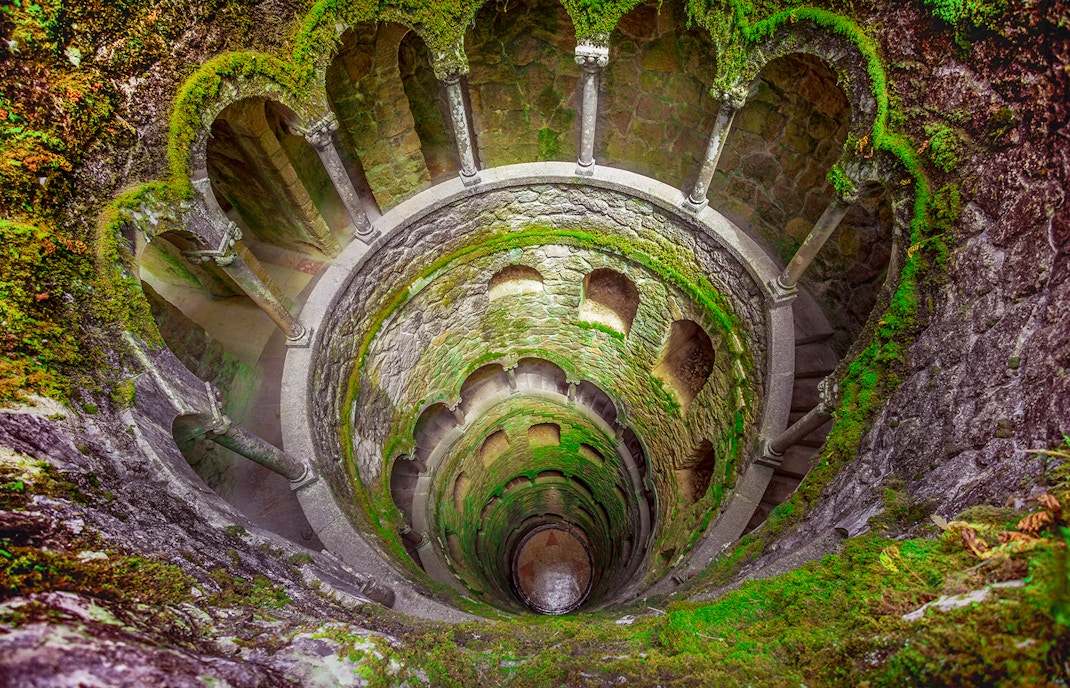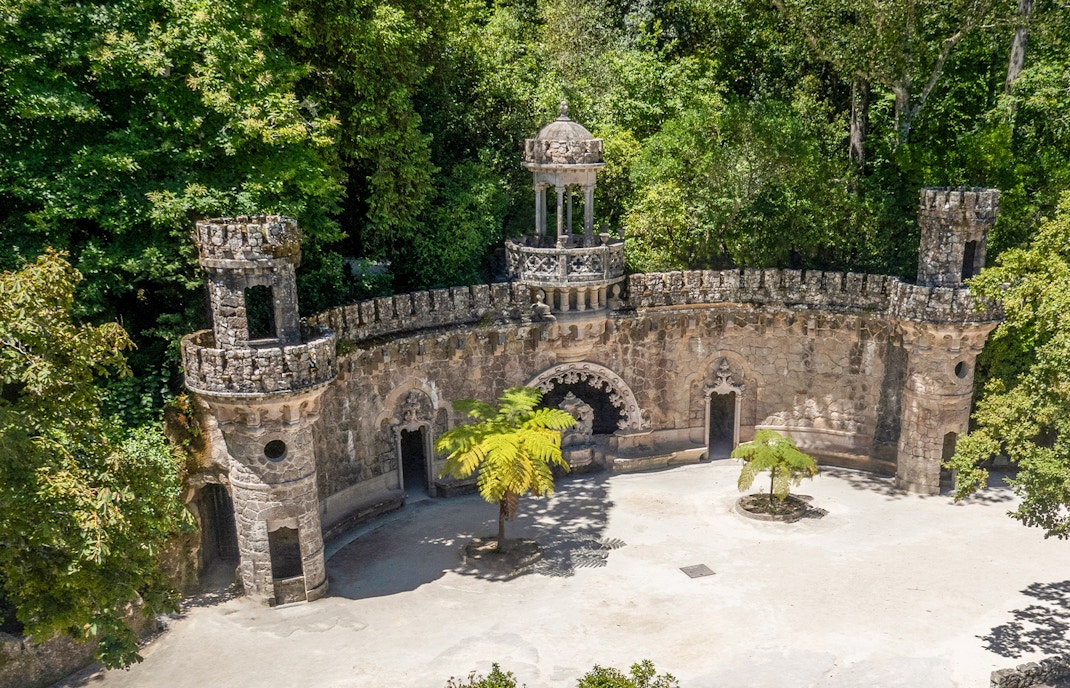The architecture of Quinta da Regaleira is a mix of various styles, featuring elements inspired by Roman, Gothic, Renaissance, and Manueline architectural traditions.
The Regaleira palace and chapel, the focal points of the estate, display detailing and Intricate decorations characteristic of these architectural styles. The palace's facade has Gothic pinnacles, gargoyles, and capitals showcasing medieval architectural features. Inside the palace you can see huge halls and elegant living areas.
The chapel has paintings of religious figures and symbolic motifs. All the structures and symbols in the building represent Monteiro's interests in alchemy, Masonry, the Knights Templar, and the Rosicrucians.
The initiation wells, Leda's Cave and tunnels all contribute to the mystical atmosphere of Quinta da Regaleira.
